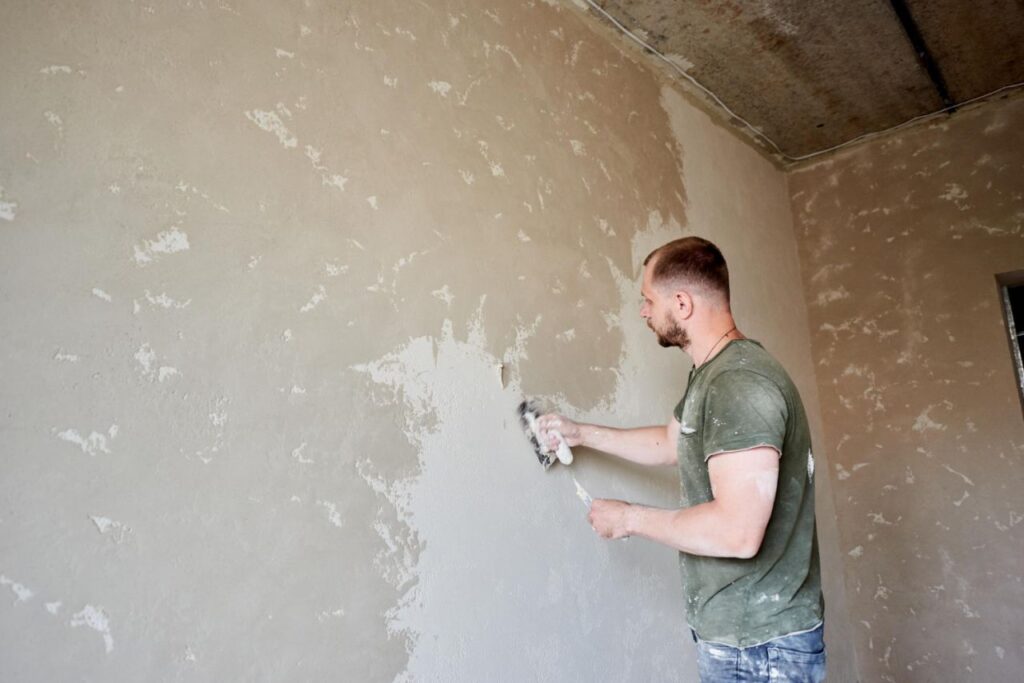Plaster remains a highly valued material in construction due to its versatility, durability, and aesthetic appeal. Despite the rise of alternative materials in the construction industry, plaster continues to play a significant role in creating durable, energy-efficient, and visually appealing spaces.
This comprehensive guide explores the various benefits of plaster, highlighting its key characteristics, types, and applications in modern construction and interior design.
Let’s Get Straight To The Point
Plaster is a versatile and durable material commonly used in construction for both aesthetic and functional purposes. It offers numerous benefits, including fire resistance, acoustic insulation, and moisture resistance, making it ideal for walls, ceilings, and decorative finishes.
Different types of plaster, such as gypsum plaster, lime plaster, and cement plaster, offer unique advantages for various applications, including historical restoration and modern design. Plaster’s durability and ease of maintenance, combined with its environmental benefits, make it an excellent choice for creating long-lasting, energy-efficient, and visually appealing spaces.
Why Is Plaster So Beneficial?
Plaster is a crucial material that provides both aesthetic and functional advantages. It has been used for centuries to coat walls, ceilings, and create decorative elements. The benefits of plaster are vast, making it an ideal choice for various applications, from enhancing interior spaces to improving structural safety. In addition to its fire-resistant plaster properties, plaster offers several other advantages such as superior durability, sound insulation, and energy efficiency.
Key Characteristics of Plaster
- Workability: Plaster is easy to mix and apply, creating a smooth, polished surface ideal for decorative plaster finishes.
- Setting Time: The setting time of plaster can vary, with some formulations drying quickly, while others allow for slower application to prevent cracking.
- Strength and Durability: Once set, plaster becomes a durable plaster surface resistant to general wear and tear.
- Adhesion: Proper adhesion is essential for ensuring that plaster stays intact without peeling or cracking.
- Fire Resistance: Particularly in gypsum plaster, fire resistance is a significant feature, which is important for enhancing the safety of buildings.
Aesthetic Benefits of Plaster
Plaster’s aesthetic benefits are one of the key reasons for its continued popularity. It provides a versatile canvas for various decorative and functional applications, transforming any space with its smooth finishes and ability to form intricate designs.
Transformative Aesthetics
Plaster offers a smooth, seamless finish that acts as the perfect base for paint, wallpaper, and other decorative treatments. Plaster can also be moulded into complex designs, such as plaster moulding and plaster ceiling roses, adding sophistication and charm to any room.
Design Flexibility
The design possibilities with plaster are virtually limitless. It can be shaped into various textures and decorative elements, such as plaster textures, cornices, and columns. This flexibility makes plaster an ideal choice for creating custom designs, whether traditional or modern.
Enhanced Durability and Longevity
Plaster provides a highly durable plaster surface that resists damage better than other materials like drywall. Plaster’s resistance to wear and tear ensures long-lasting beauty with minimal maintenance, making it a cost-effective choice over time.
Superior Acoustic Qualities
Acoustic plaster benefits include its ability to absorb sound, improving the acoustics of a room. This makes plaster ideal for spaces such as home offices, music rooms, or conference halls, where noise control is crucial.
Fire Safety
Fire-resistant plaster, particularly gypsum plaster, provides an added layer of protection against fires. The moisture content in gypsum plaster releases steam when exposed to heat, slowing the spread of flames and offering valuable time for evacuation.
Functional Advantages of Plaster
In addition to its aesthetic appeal, plaster offers several functional benefits that make it an essential material for both residential and commercial buildings.
Durability and Resilience
Plaster is highly resilient and can withstand physical impacts, scratches, and changes in environmental conditions such as humidity and temperature fluctuations. Whether used for plaster for walls or plaster for ceilings, plaster provides a long-lasting, durable plaster surface.
Superior Acoustic Insulation
Due to its dense nature, plaster provides excellent sound insulation, making it an ideal choice for spaces where noise reduction is important. Its sound-absorbing properties make it perfect for plaster for interior design in rooms like theatres, recording studios, or bedrooms.
Resistance to Mould and Mildew
Moisture-resistant plaster naturally prevents the growth of mould and mildew, improving the overall indoor air quality. This is especially beneficial in areas prone to high humidity, such as bathrooms, kitchens, or basements.
Environmental Benefits of Plaster
Plaster is an environmentally friendly material made from natural ingredients like gypsum, lime, and clay. These materials are abundant and have a minimal environmental impact during production. Additionally, plaster’s natural insulating properties help regulate indoor temperatures, reducing the need for artificial heating and cooling, which in turn lowers energy consumption.
Easy to Repair and Maintain
In the event of damage, plaster wall repair is relatively straightforward and cost-effective. Small cracks or chips can be easily patched, preserving the integrity of plastered surfaces.
Modern Plastering Techniques
With the advancement of construction technology, modern plastering techniques have made it easier and faster to apply plaster while still achieving high-quality results. These techniques focus on enhancing efficiency and sustainability in plaster application, ensuring that the material continues to meet the demands of contemporary design and construction.
Conclusion
Plaster remains a versatile and durable material that enhances the aesthetic appeal, functionality, and safety of both residential and commercial spaces. Its fire-resistant plaster properties, acoustic plaster benefits, and environmental sustainability make it an excellent choice for modern construction. Whether you’re using plaster for walls, plaster for ceilings, or plaster moulding for decorative details, plaster provides a seamless, long-lasting finish that stands the test of time.
FAQs About Plasterer
What Is Plaster Made Of?
Plaster is a building material composed of water, aggregate (such as sand), and a binder, which can be gypsum, lime, or cement. Each type of plaster has its unique properties and applications.
Why Is Plaster Considered A Versatile Material?
Plaster is versatile because it can be used in various applications, including interior and exterior walls, ceilings, and decorative elements. Its composition allows it to be moulded into different textures and shapes, accommodating various design preferences.
How Does Plaster Contribute To The Durability Of A Building?
Plaster creates a robust and durable wall finish that is more resistant to knocks, dents, and general wear and tear than alternatives like drywall. The chemical reaction during the plastering process strengthens the walls, making them more durable.
Can Plaster Improve The Acoustic Properties Of A Room?
Yes, plaster has superior acoustic properties due to its density and the way it is applied. It can absorb sound waves, reducing noise levels within a room and creating a more tranquil and comfortable living environment.
Is Plaster Fire-Resistant?
Gypsum plaster, in particular, has fire-resistant properties, making it a safe choice for areas where fire safety is a concern. It can act as a barrier, slowing the spread of flames and providing valuable time for occupants to evacuate.



